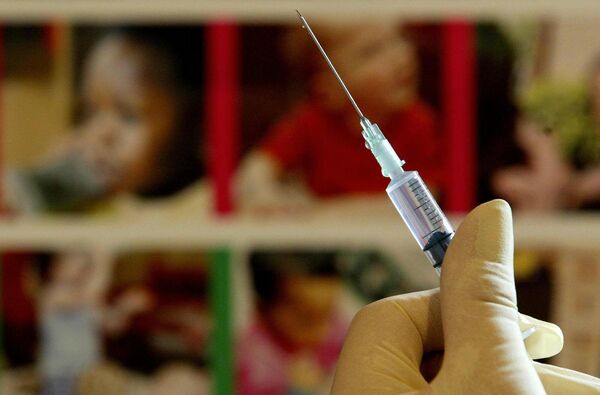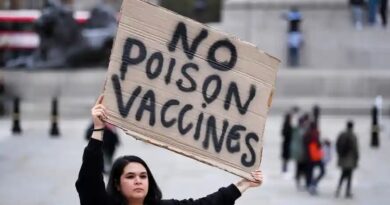Catherine Conlon: We won’t eradicate cervical cancer without addressing anti-vax movement
Ireland plans to ‘eliminate’ cervical cancer by 2040 according to new targets announced by Health Minister Stephen Donnelly this week.
Elimination means fewer than four cases per 100,000 women and require a 10% increase in vaccination rates for girls up to age 15 from the current 80% to 90% by 2030; along with cervical screening coverage by CervicalCheck at or above 73%; and the number of women receiving treatment within the first year of diagnosis at or above 97%.
Around 300 women are diagnosed with cervical cancer annually.
Announcing the plan, Mr Donnelly said: “We can now say that babies born today will reach adulthood in an Ireland where we expect to have eliminated cervical cancer.
“We are now in a strong position to exceed WHO global targets by announcing 2040 as the date on which we expect to achieve elimination in Ireland.”
But he warned that high vaccination coverage is essential to meeting this target.
“Achieving elimination of cervical cancer requires immense effort and we must ensure we increase HPV vaccination and screening coverage.”
Vaccines only work when they get into people’s arms.
The covid-19 pandemic fuelled the largest sustained decline in childhood vaccinations in 30 years — placing millions of children globally at risk of devastating and preventable diseases.
Data from Unicef and the World Health Organisation (WHO) this year reported that the percentage of children who received three doses of the vaccine against diphtheria, tetanus, and pertussis (DTP3, a marker for immunisation coverage within and across countries) fell five percentage points between 2019 and 2021 to 81% — the lowest level since 2008.
Unicef’s executive director Catherine Russell called it a “red alert” for child health.
“We are witnessing the largest sustained drop in childhood immunisation in a generation. The consequences will be measured in lives.”
Since 1990, immunisation has played a key role in the 60% fall in childhood mortality in children aged 5 and under. The evidence confirms that immunisation is one of the most successful and cost-effective public health interventions, saving an estimated 2 to 3 million lives each year.

Factors listed by Unicef as the key factors underlying recent steep declines in routine immunisation rates for children include: increasing numbers of children living in conflict and fragile settings; increased vaccine misinformation; and post-pandemic issues on service and service supply chains.
But the hoped for recovery of immunisation rates in 2021 did not happen.
“While a pandemic hangover was expected last year as a result of COVID-19 disruptions and lockdowns, what we are seeing now is a continued decline,” Russell said.
“We need immunisation catch-up for the missing millions or we will inevitably witness more outbreaks, more sick children and greater pressure on already strained health systems.”
And that is exactly what is happening. Unicef cites avoidable outbreaks of measles and polio in the last year — underscoring the vital role of immunisation in keeping children, adolescents, adults and societies healthy.
A key factor in this is the increasing role of ‘anti-vaccine’ and ‘anti-science.’ These terms can mean different things to different people.
Co-director of the Texas Children’s Centre for Vaccine Development, Prof Peter J Hotez in his new book states that ‘anti-vaccine’ refers to groups or individuals making false claims about vaccines or their harmful effects.
“Today, anti-vaccine groups and leaders promote the political exploitation of vaccines and vaccine mandates, claiming they constitute instruments of government control, while simultaneously dismissing their health and community benefits.
“The consequences of allowing this political assault on science to continue unopposed are unacceptable.
“This could bring back childhood illness on a massive scale and reverse hard-won gains in public health,” states Prof Hotez.
According to the , those hard-won gains include up to an almost 80% to 90% decline in under-five-year-old childhood deaths from vaccine preventable diseases such as measles, pertussis, tetanus, diphtheria and meningitis between 2000 and 2019.
Our entire vaccine ecosystem has become extremely fragile.
A recent Unicef report on the collected by the Vaccine Confidence Project confirms that confidence in the importance of vaccines for children is now lower than before the pandemic in many countries.
This decline in confidence has been seismic in some countries. In South Africa and Japan, the proportion of people confident in the importance of childhood vaccines dropped by approximately one third during the pandemic.

China, India, and Mexico were the only countries where confidence in vaccines held firm or even improved. In most countries, people under 35 and women were more likely to report less confidence about vaccines for children.
Despite the falls, Unicef report that overall support for vaccines remains relatively strong with more than half of the 55 countries studied reporting more than 80% of respondents perceiving vaccines as important for children.
In Ireland, the perception of the importance of childhood vaccines fell 6% from 91.5% to 85.5% — a significant and concerning fall.
Lecturer in psychology at Swansea University Dr Simon Nicholas Williams, suggested to the Conversation in July, that reasons for declines in vaccine confidence post pandemic include: Concerns that covid vaccines were developed too quickly; concerns over side effects; distrust in government and a belief in conspiracy theories.
His research team suggest that hesitancy around covid shots could also lead to hesitancy ‘spillover’ for other vaccines.
Childhood vaccination uptake figures in Ireland have declined post pandemic. The most recent figures from the Health Protection Surveillance Centre (HPSC) show uptake of six-in-one vaccine at 24 months in Quarter 2 (Q2) 2023 at 92.4% — compared to 94.8% in Q1 2018.
Uptake of MMR was 89.2% in Q2 2023 compared to 92.5% in Q1 2018.
Addressing vaccine hesitancy implies utilising the ‘three Cs model’. We need to maximise convenience or ease of access and minimise complacency by adequately communicating risk of disease. The third C is confidence.
Dr Williams suggests that to increase confidence we need to confront vaccine hesitancy caused by misinformation. One way to achieve this is to use social media to combat misinformation by investing in the promotion of accurate information.
“Organisations such as the WHO and Unicef will pay a key role in building confidence globally,” Dr Williams said.
The WHO lists vaccine hesitancy as one of the top ten threats to global health.
Tackling catch-up of missed vaccine doses is not enough. Just as important is the need to tackle misinformation. Otherwise, vaccine hesitancy will remain one of the greatest threats to global health for years to come.
Cervical cancer is only one of a range of vaccine preventable illnesses whose elimination is now under threat.
This article has been archived for your research. The original version from Irish Examiner can be found here.


